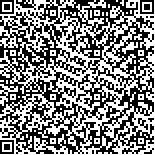| 摘要: |
| 应用双箱动力学模型模拟了刺参在Pb、Zn、Cu、Cd、Cr、Hg和As 7种重金属混合暴露条件下, 呼吸树、消化道和体壁组织对重金属的生物富集与释放实验。结果表明: (1) 重金属在刺参组织器官中的富集具有选择性, 理论平衡状态下, As、Cd、Cr在各组织的含量分布(CAmax): 呼吸树>消化道>体壁, Cu、Zn分布规律(CAmax): 消化道>呼吸树>体壁, Hg、Pb分布规律(CAmax): 体壁>呼吸树>消化道。(2) 刺参对不同重金属的富集系数存在显著差异(P<0.05), 呼吸树组织对Cr离子富集系数最高2298.2, 其次是Cu、Cd离子, 其BCF均在1500以上, Hg、Pb、Zn和As离子在呼吸树中的富集系数较低。体壁对Cu离子的富集系数最高为1560.7, 对 As离子富集系数最低52.7。消化道对Cu离子富集系数最高6037, 对As离子富集系数最低为87.9。 |
| 关键词: 刺参 富集 释放 重金属 双箱动力学模型 |
| DOI:10.11693/hyhz20130313001 |
| 分类号: |
| 基金项目:山东省科技发展计划项目资助, 2009GG10009044号; 烟台市科技发展计划项目资助, 2011457号; 水生动物营养与饲料“泰山学者”岗位经费资助, 2007—2012。 |
附件 |
|
| ACCUMULATION AND RELEASE OF COMMON HEAVY METALS IN APOSTICHOPUS JAPONICUS |
|
jianghuichao,liuaiying and songxiukai
|
|
Shandong Marine Fisheries Research Institute,Yantai 264006,China,Shandong Marine Fisheries Research Institute,Yantai 264006,China,Shandong Marine Fisheries Research Institute,Yantai 264006,China
|
| Abstract: |
| We evaluated the kinetic parameters of biological accumulation and release of seven heavy metals (Pb, Zn, Cu, Cd, Cr, Hg and As) in respiratory tree, alimentary canal, and body wall of Apostichopus japonicus in two-compartment bioconcentration model in experiment. A. japonicus were exposed to water mixed with the seven heavy metals. The results show that the heavy metals were accumulated selectively in major organs and tissues in A. japonicus. The maximum concentrations of As, Cd and Cr in A. japonicus are in the order of respiratory tree > alimentary canal > body wall; for Cu and Zn: alimentary canal > respiratory tree > body wall; and Hg and Pb: body wall > respiratory tree > alimentary canal. Significant difference was observed in bioconcentration factor (BCF) among the seven heavy metals. The respiratory tree showed the strongest Cr-accumulation with BCF 2298.2, followed by Cu and Cd with BCFs >1500, and weaker accumulation in Hg, Pb, Zn and As. However, alimentary canal and body wall showed the strongest accumulation for Cu with BCFs 6037 and 1560.7, respectively, and then the weakest accumulation in As with BCFs 87.9 and 52.7, respectively. |
| Key words: Apostichopus japonicus, accumulation, release, heavy metal, two-compartment kinetic model |
